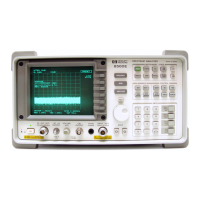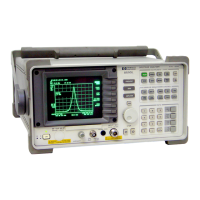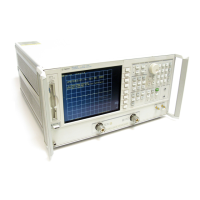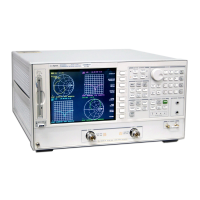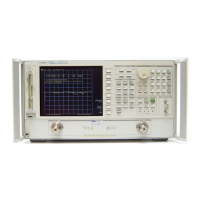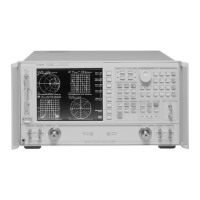How to Measure Power Power Measurement
Agilent 8163A Lightwave Multimeter, Agilent 8164A Lightwave Measurement System, & Agilent 8166A Lightwave
Multichannel System, Fourth Edition
75
Where,
REF is the reference, and
P
measured
is the absolute power level (see “How to Set the Calibration Offset”
on page 73).
The [Dsp->Ref] softkey is displayed if you move to a power measurement
channel.
How to Reference Another Power Measurement
Channel
You can use the reference mode, [Ref Mode], to reference another Power Meter’s
current power level. If you choose this mode, the reference of the channel
continuously updates to the current power value measured by the other channel.
The following equations describe how the power in dB is calculated if you
reference another channel:
P
display
(dB) = P
measuredA
(dBm) − P
measuredB
(dBm) − REF(dB)
or
Where:
P
display
is the displayed relative power,
P
measuredA
is the absolute power level (see “How to Set the Calibration
Offset” on page 73) measured by the current Power Meter, and
P
measuredB
is the absolute power level (see “How to Set the Calibration
Offset” on page 73) measured by the Power Meter you choose to
reference, and
REF is the reference level in decibels (dB).
NOTE You can only set the reference level, REF, in decibels (dB) when you reference
Power Meter’s current power level. This reference level is stored in separate
memory than the absolute reference level.
To reference another channel:
1 Move to the Power Meter channel and press the [Details] softkey.
2 Move to the [Ref Mode] parameter and press Enter.
3 Move to the channel number you want to reference, using the cursor key, and
press Enter. For example, in Figure 44, you could choose 3.1 (for channel 3.1).
P
display
dB() 10
P
measuredA
W()
P
measuredB
W()
-------------------------------------log REF dB()–=
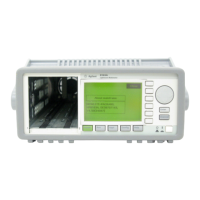
